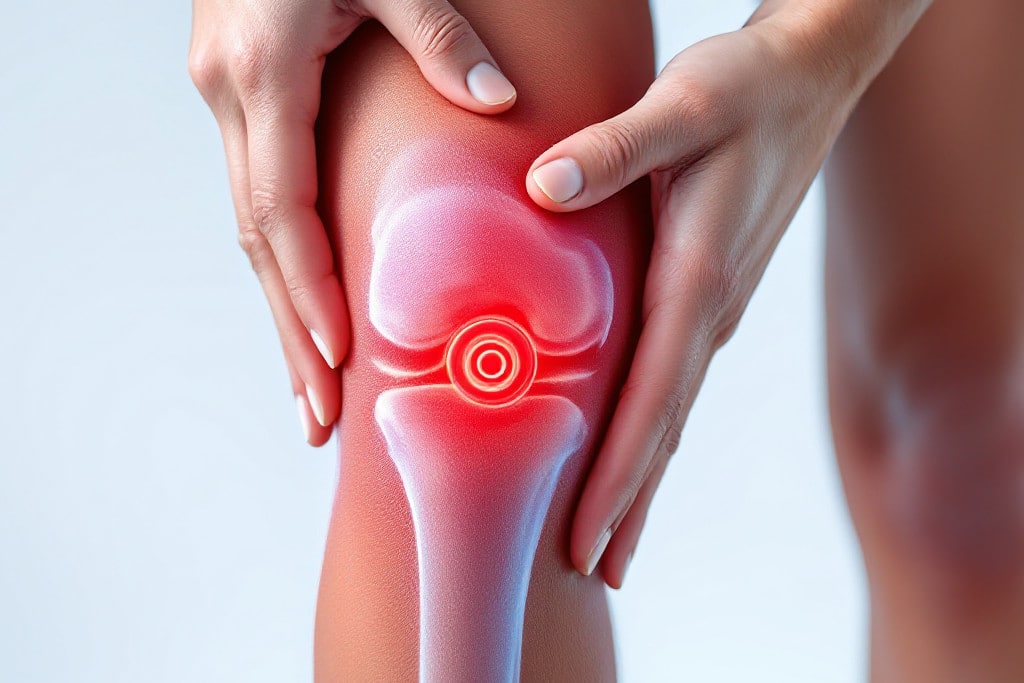
Osteoarthritis (OA) of the knee is a prevalent condition impacting millions, causing pain and functional limitations. Viscosupplementation, the practice of injecting hyaluronic acid (HA) into the knee joint, is a widely used non-surgical option to manage symptoms by supplementing the joint’s natural lubricating fluid. Among the many available HA products, Euflexxa® (by Ferring Pharmaceuticals) and Monovisc® (by Anika Therapeutics) are two established, non-avian derived options, distinguished primarily by their administration protocols. (View our full selection of orthopedic injectables)
This article provides a comparative analysis of Euflexxa vs Monovisc, highlighting their key differences in injection schedules, formulations, clinical evidence, and safety to guide practitioners and their patients in selecting the appropriate knee OA therapy.
Understanding the Products: Formulation & Mechanism
Both Euflexxa® and Monovisc® are sodium hyaluronate solutions derived from bacterial fermentation, making them non-avian sourced – a relevant point for patients with potential avian protein allergies. However, their formulations differ to support their distinct dosing regimens:
- Euflexxa®: Composed of 1% Sodium Hyaluronate (typically 10mg/mL) as a highly purified, linear structure. It is administered in multiple injections, aiming to build up the concentration of HA in the synovial fluid over a few weeks.
- Monovisc®: Composed of a highly purified, partially cross-linked Sodium Hyaluronate designed for single administration. It is provided in a larger syringe (typically 4mL) with a higher total amount of HA per injection compared to a single Euflexxa syringe. The partial cross-linking may contribute to increased residence time within the joint compared to non-cross-linked HA of similar molecular weight administered weekly.
The core mechanism for both is viscosupplementation – aiming to restore the viscoelastic properties of synovial fluid, thereby improving lubrication, shock absorption, reducing friction, and helping to decrease pain and improve joint function in knee OA.
Clinical Efficacy: Comparing Treatment Outcomes
Both Euflexxa® and Monovisc® have demonstrated clinical efficacy in reducing pain and improving function in patients with mild to moderate knee OA compared to placebo or saline controls in their respective clinical trials. Available data suggests they offer similar overall efficacy profiles for appropriate patients. For instance, studies have shown both products can provide significant pain reduction starting within a few weeks and lasting up to 6 months.
While direct head-to-head clinical trials comparing Euflexxa’s 3-injection protocol directly against Monovisc’s single-injection protocol with definitive statistical superiority for one over the other are often limited, the available data indicates that both are effective options for symptomatic relief of knee OA when used as directed.
Dosing Regimens & Administration: The Key Difference
The most significant practical distinction between Euflexxa® and Monovisc® lies in their recommended administration protocols:
- Euflexxa® Protocol: Involves a course of three 2mL intra-articular injections, administered into the knee joint space once a week for three consecutive weeks. The total volume delivered over the course is 6mL.
- Monovisc® Protocol: Consists of a single 4mL intra-articular injection administered into the knee joint space.
Injection Technique: For both products, strict aseptic technique is mandatory for every injection to prevent septic arthritis. Standard intra-articular knee injection approaches are used. It is recommended to remove any significant joint effusion prior to injecting either product. Always use appropriate needle size per the product IFU and refer to the specific IFU provided with the product for detailed injection guidelines.
Practitioner/Patient Considerations: This difference in schedule offers a choice. Euflexxa® requires 3 clinic visits, which might be preferred for patients who benefit from more frequent clinical interaction or those who find the idea of building HA levels gradually appealing. Monovisc® offers the convenience of a single visit, which can be ideal for patients with busy schedules, travel limitations, or those who prefer fewer injections. Patient adherence to the full series (for Euflexxa) versus attendance for a single injection (for Monovisc) can also influence choice.
Safety Profiles: Comparing Adverse Events
Both Euflexxa® and Monovisc® are generally considered safe and well-tolerated non-avian sourced HA products when administered correctly. Their safety profiles are largely similar.
- Common Adverse Events: Transient, typically mild to moderate injection site reactions are common for both. These include arthralgia (joint pain), swelling or effusion in the joint, stiffness, local pain, redness, and bruising at the injection site. Other reported adverse events are often related to general musculoskeletal pain.
- Serious Risks (CRITICAL):
- Septic Arthritis: The most severe risk associated with any intra-articular injection. Though rare, it is a medical emergency. Strict adherence to aseptic technique is the most crucial preventative measure for both products.
- Hypersensitivity/Allergic reactions: Though rare, can occur with any injectable product.
- Severe inflammatory reactions (pseudo-sepsis): A rare, non-infectious reaction mimicking septic arthritis.
Based on available data from clinical trials, the rates of adverse events appear broadly comparable between the two products for appropriate patients. Practitioners must always consult the specific product IFU relevant to their region for complete safety information.
Making the Choice: Euflexxa® vs. Monovisc®
The primary factor guiding the choice between Euflexxa® and Monovisc® for many practitioners and patients is the convenience of the administration schedule (three weekly injections vs. one single injection). Beyond this, factors may include patient tolerance for multiple injections, scheduling feasibility, and practitioner familiarity with the handling characteristics of each product. While potential differences in onset based on the injection schedule might be observed by some individuals, the overall efficacy and safety profiles for appropriate knee OA patients appear comparable based on available clinical data.
Sourcing Authentic Viscosupplements
Ensuring the authenticity, sterility, and quality of both Euflexxa® and Monovisc® is paramount for patient safety and treatment efficacy. Always purchase genuine products from reputable licensed suppliers. Be vigilant against counterfeit or improperly stored intra-articular injectables, as they pose significant risks. Health Supplies Plus is committed to providing authentic viscosupplement products sourced reliably for licensed medical professionals.
Conclusion
Euflexxa® and Monovisc® are both effective, non-avian sourced hyaluronic acid viscosupplements offering symptomatic relief for knee osteoarthritis pain. Their main difference lies in their administration protocols – Euflexxa® requiring three weekly injections, and Monovisc® requiring a single injection. This provides practitioners and patients with a valuable choice based primarily on convenience and preference. Successful outcomes with either product rely on proper patient selection, meticulous adherence to aseptic technique, accurate intra-articular injection, awareness of potential risks, and sourcing authentic product according to local regulations.

About the Author: Doris Dickson is a specialist writer for Health Supplies Plus, focusing on the aesthetic medicine industry. She diligently researches cosmetic treatments and products to provide clear, concise information relevant to licensed medical professionals. Her work supports Health Supplies Plus’s commitment to being a reliable informational resource and trusted supplier for the aesthetic community.
Disclaimer: The content provided in this article is intended for informational purposes only and is directed towards licensed medical professionals. It is not intended to be a substitute for professional medical advice, diagnosis, or treatment, nor does it constitute an endorsement of any specific product or technique. Practitioners must rely on their own professional judgment, clinical experience, and knowledge of patient needs, and should always consult the full product prescribing information and relevant clinical guidelines before use. Health Supplies Plus does not provide medical advice.
